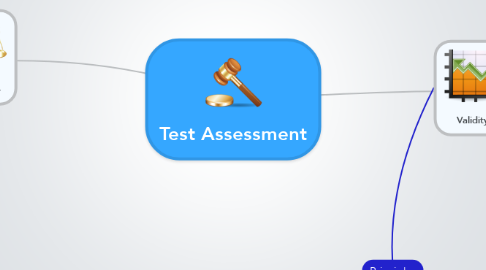Test Assessment
by John Laffan


1. Reliability-
1.1. As group variability goes up, so does reliability
1.2. As scoring reliability goes down so does the test’s reliability
1.3. In general when the test length increases so does its reliability
1.4. As test items become easier or more difficult the tests reliability goes down.
2. Reliability-
2.1. Test-Retest (Stability): This is administering a test multiple times to insure reliability
2.2. Alternate Forms: If there are 2 equivalent tests, they can be used to estimate reliability.
2.3. Internal Consistency:
2.3.1. Split halves: This involves splitting the test in half beginning and end, and seeing if both halves are reliable.
2.3.2. Odd-Even reliability: Splits a test in half by alternating the questions for a more diverse grouping.
2.3.3. Kuder-Richardson Methods: These are quantitative like formulas that can be applied to test items to test their reliability within a single concept.
3. Principles
4. Validity-
4.1. Adequacy is dependent on the strength of the validity coefficient and the purpose of the test
4.2. Group variability affects the strength of the validity coefficient.
4.3. Validity coefficient must be judged in terms of relevance and reliability of the criterion.
5. Validity
5.1. Content Validity: The systematical comparison of a test item with instructional objectives.
5.2. Criterion- related validity: Presents evidence by establishing correlation between test scores with external standards to give a numerical estimate.
5.2.1. Concurrent: Determined by correlating test with criterion collected at the same time
5.2.2. Predicative: Determined by correlating test with criterion collected over a period of time
